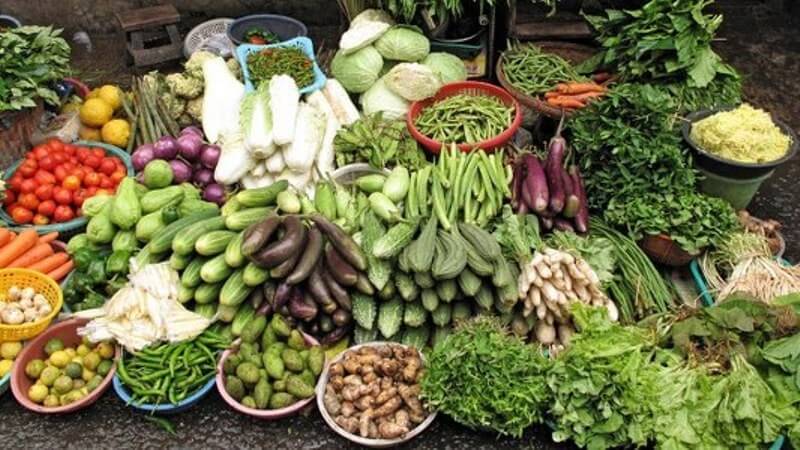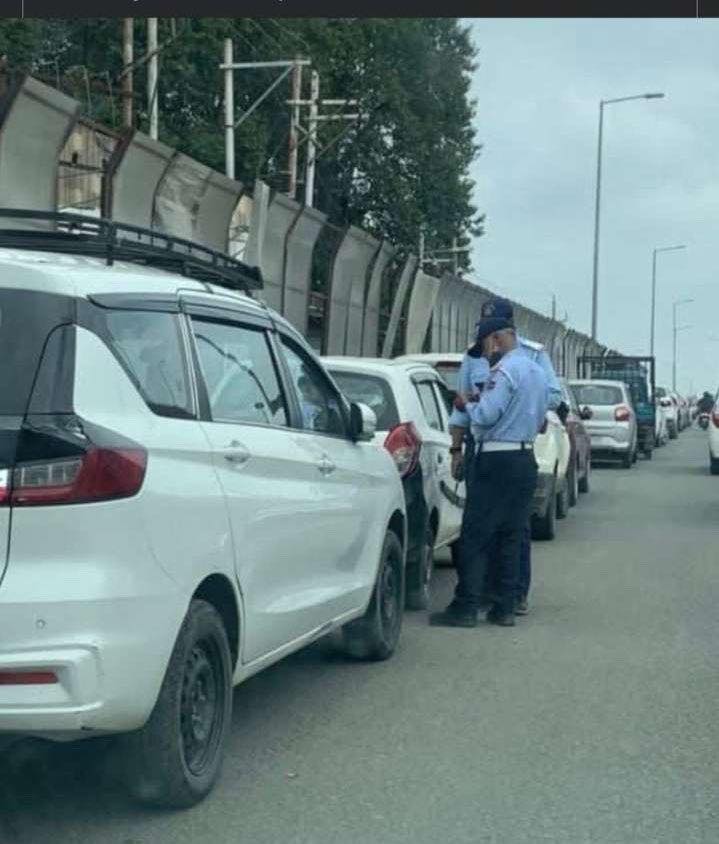Rising Costs, Shrinking Comfort: How Inflation Is Reshaping Daily Life in Jammu & Kashmir
By: Javid Amin | 12 September 2025
A Region Under Pressure
On a crisp September morning in downtown Srinagar, 35-year-old Rafiqa Ahmad walked into the neighborhood vegetable market with her two children tugging at her kurta. Once, her shopping bag returned full with tomatoes, onions, leafy greens, and fruits for a week. Now, halfway through the bazaar, she found herself counting notes nervously.
“Every meal feels like a calculation,” she sighed. “We used to buy tomatoes for ₹40 a kilo. Now they’re ₹70. If I buy tomatoes, I can’t buy apples. If I buy apples, I have to skip milk.”
This is not an isolated story. Across the Valley, families are making impossible choices—between nutrition and affordability, between dignity and survival. Inflation, usually a quiet economic indicator buried in newspapers, has become a lived crisis.
While national headlines boast of economic recovery and falling inflation, Kashmir tells a different tale—one of structural vulnerability, broken supply chains, and policy gaps.
Inflation Snapshot: Kashmir vs. India
The latest data from August 2025 paints a sobering picture:
| Region | Retail Inflation Rate |
|---|---|
| Jammu & Kashmir | 3.75% |
| National Average | 2.07% |
| Urban J&K | 2.47% |
| Rural J&K | 1.69% |
| Core Inflation (Excl. Food & Fuel) | 4.3% |
At first glance, these may seem like small numbers. But in a region as economically fragile as Kashmir, every decimal point translates into real hardship.
-
Urban pain points: In Srinagar, Anantnag, and Baramulla, prices of fuel, rent, and services are climbing faster than incomes.
-
Rural vulnerabilities: While rural inflation looks lower on paper, the reality is harsher—climate shocks, crop losses, and poor connectivity amplify the struggle.
-
Core inflation worries: Even as food inflation shows slight deflation at -0.69%, the costs of essentials like soaps, detergents, and medicines continue to rise.
In simple terms: food may look “cheaper” statistically, but the cost of living for an average Kashmiri household is spiraling.
What’s Getting Expensive? Sector-Wise Breakdown
Vegetables & Perishables
Local markets across South Kashmir report sharp hikes in fresh produce. Tomatoes, onions, and leafy greens are up 20–30%.
Case Study: The Farmer’s Loss
Ghulam Nabi, a small farmer from Shopian, watched helplessly as unseasonal rains destroyed half his tomato crop. “I lost almost 50% to waterlogging. Now I buy from Punjab at twice the cost. How can locals afford this?”
Meat & Eggs
Protein, once a staple, is now a privilege. Meat and egg prices have risen by 15–25%.
Case Study: The Poultry Struggle
In Pulwama, poultry farmer Shabir Hussain struggles to sustain his flock. “The cost of chicken feed has doubled due to transport disruptions. People want chicken at old prices, but I can’t sell at a loss.”
Edible Oils & Pulses
Heavily import-dependent, edible oils and pulses have become unaffordable for many middle-class families.
Personal Care & Household Items
Even basics like soap, detergent, and baby diapers are 10–15% costlier. Families now ration such purchases.
Quote from a Srinagar shopkeeper:
“Earlier, women bought detergent packets in bulk. Now they ask for one small pouch. Inflation is killing everyday dignity.”
Root Causes: Why Is Kashmir Feeling the Heat?
1. Highway Disruptions
The Srinagar–Jammu National Highway, Kashmir’s lifeline, is fragile. Landslides and floods recently blocked traffic for two weeks, stalling goods and causing perishables to rot.
Map Insight: 250-meter damaged stretch at Tharad (Udhampur) caused days of standstill.
Case Study: Apple trucks stranded for 16 days at Qazigund rotted, leading to losses worth crores.
2. Climate Shocks
From unseasonal rains to flash floods, climate volatility has reduced crop output. South Kashmir bore the brunt, with paddy fields submerged and apple orchards waterlogged.
Case Study: A family in Anantnag lost its entire maize harvest due to sudden hailstorms.
3. Digital Blackouts
Frequent internet shutdowns cripple logistics, online banking, and farmer–mandi communication. For traders depending on digital payments, each blackout means canceled orders.
4. Fuel Price Volatility
Rising fuel costs push up transport charges, cascading into higher retail prices. A truck driver from Ramban put it simply:
“If diesel is expensive, everything is expensive.”
5. Policy Gaps
Unlike other Indian states, J&K lacks a price stabilization fund. As a Union Territory, its governance is reactive, not proactive. Hoarding and black-marketing thrive in this vacuum.
The Emotional Cost of Inflation
Inflation is not just about economics—it’s about human psychology.
-
Families: Parents cut down on proteins and fruits, lowering children’s nutrition.
-
Children: Stationery, school uniforms, and healthcare are being sacrificed.
-
Women: As primary budget managers, women report increased stress and anxiety.
-
Small businesses: Shopkeepers face falling customer trust, as prices rise daily.
Quote: “We’re not just losing money—we’re losing morale.” — Mother of three, Pulwama
Sectoral Impacts
Tourism
Hotels and restaurants raise tariffs to cover food costs, while travelers cut stays shorter. Houseboat owners in Dal Lake struggle to feed guests with rising ingredient prices.
Horticulture
Apple growers face double trouble: damaged crops from rains + soaring transport costs. Sopore’s fruit mandi has witnessed a 20% drop in exports.
Food Industry
Fast-food stalls, bakeries, and frozen-food sellers struggle to balance rising costs with affordability.
Case Study: A kebab seller in Baramulla now sells half-portions to retain customers.
Retail Shops
General stores witness fewer footfalls as families cut non-essentials.
Comparing Kashmir With the Rest of India
Why do inflation shocks hurt Kashmir more?
-
Geography: Single-road dependence.
-
Climate: Frequent natural disasters.
-
Politics: Limited economic autonomy.
By contrast, Himachal Pradesh and Uttarakhand manage better with diversified road networks and cold storage facilities.
What Needs to Change? Solutions Roadmap
1. Restore Statehood for Economic Autonomy
A local assembly could create region-specific subsidies and stabilize essential prices.
2. Build Climate-Resilient Infrastructure
Flood-proof roads, local mandis, and cold storage would reduce dependence on imports.
3. Launch Kashmir Price Monitoring Cell
Weekly bulletins, trader engagement, and anti-hoarding mechanisms.
4. Empower Local Producers
E-mandis, micro-loans, and cooperatives for horticulture, saffron, and handicrafts.
Voices From the Valley
-
Truck driver, Ramban: “Every extra hour on the road costs me fuel, food, and sleep. Who pays for that?”
-
Hotelier, Gulmarg: “Guests cut their stay short. Inflation kills tourism slowly.”
-
Fruit grower, Sopore: “I spent the year nurturing my apples, only to watch them rot by the roadside.”
-
Mother, Pulwama: “Children ask for fruits, and I give them excuses. That breaks me.”
Bottom-Line: Inflation as a Mirror
Kashmir’s inflation crisis is not just about expensive tomatoes or onions. It’s about:
-
Broken infrastructure
-
Governance gaps
-
Climate fragility
-
Psychological exhaustion
If left unaddressed, rising costs will deepen public disillusionment and erode trust in institutions.
Kashmir doesn’t just need cheaper groceries—it needs accountability, autonomy, and empathy.



